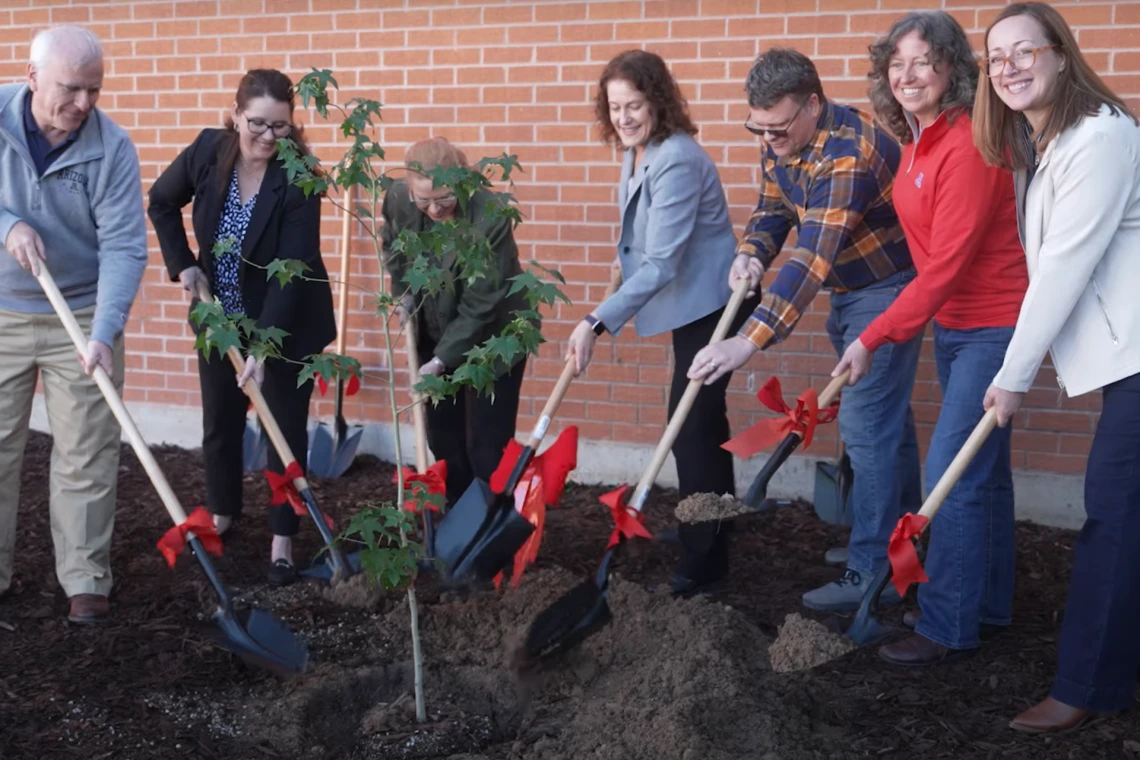A Sweetgum From Space
The U of A’s new — and second! — moon tree is a great reminder of how we bridge the high-tech with the elemental.

College of Science
One afternoon in early November, a group of about fifty people gathered on the north side of the Flandrau Science Center and Planetarium to watch a small tree get planted. It looked like an ordinary tree: Brown trunk, green leaves. But unlike most ordinary trees – or even extraordinary ones, for that matter — this tree had been grown from seeds that spent 25 and a half days orbiting the moon as part of NASA’s Artemis I mission. The moon! Imagine that. And now it’s here in Tucson, putting down roots. We really do come from all over.
It’s a nice addition to campus. But it’s also a living symbol of some of the groundbreaking research that has been done here over the years. This moon tree, for example — a sweetgum — is not our first. A sycamore nearby was given to us by NASA after spending time on the Apollo 14 flight back in 1971 — a gift reflecting the Lunar and Planetary Lab’s work in creating some of the images that led to our earliest lunar missions. Or think about the samples OSIRIS-REx brought back from the asteroid Bennu that might hold clues to the beginning of life on Earth. This is how we bridge the high-tech with the elemental, the future with the past. This is the work our students, faculty and staff do.
Among the speakers at the planting was campus arboretum director Tanya Quist, who said the two questions she gets a lot are: What is the campus arboretum and where can I find it? The answer to the first question is that it’s a kind of living museum. And like all museums, it is, on some level, a collection designed for research, education and outreach. As for the second question, just stand on campus and look around: The museum is everywhere.
